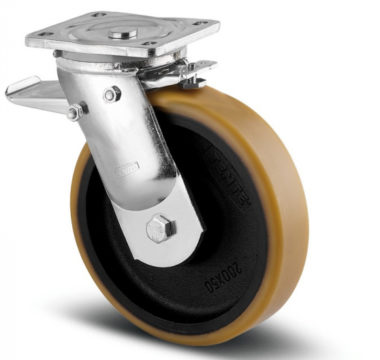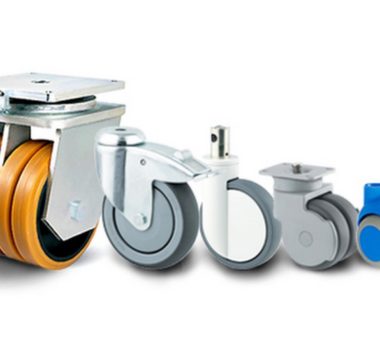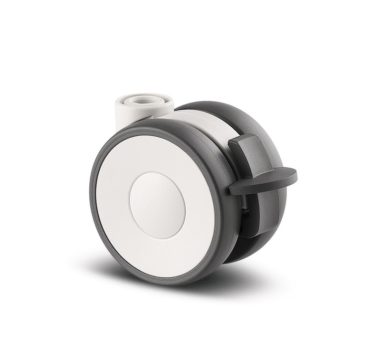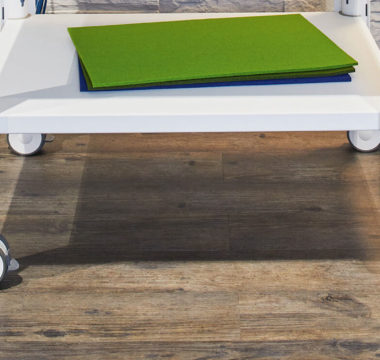Selecting the right castor for the job can be a challenge as all wheels and castors have their own unique characteristics. From stainless steel to zinc plated frames, all the way to rubber, polyurethane, plastic and high-temperature treads, the diverse characteristics of our wheels and castors mean there are many things to consider when choosing the right castor for the job.
Things to consider when choosing a castor or wheel
With over 20,000+ product variations, it is essential that you choose the correct castor or wheel for your application.
It is important to consider:
– Wheel diameter
– Wheel material
– Hub length
– Load capacity
– Environmental factors – high temperature or washable
– Manoeuvrability
Castor Wheel Diameter
One of the most important factors in selecting a castor is the wheel diameter as it has the most significant impact on resistance. As a general rule, the heavier the load, the larger the wheel diameter should be.
Castor Wheel Materials
Different applications require different wheel materials and treads and are highly dependent on the application, flooring and customer expectations.
Polyurethane (PU)
For a great performing wheel with very low roll and swivel resistance, PU tyres are the answer.
There are two types of processes traditionally used to create a polyurethane tread on a wheel – injected or poured. The injected process is usually used for institutional, industrial and medical type wheels like a UAP or XSX. For a more robust, heavy-duty wheel like an ITP or FTP, the poured process is favoured as the material is poured around a steel or aluminium hub creating a special, secure bond between the wheel centre and tread.
TENTEprene
If a more budget option is what you are after, then TENTEprene could be the solution. The injected synthetic rubber material wheel like a PJO or PJP is usually used in the institutional sector and provides a lower load capacity than PU.
Polyamide
In most cases, Polyamides give you the lowest push and pull forces due to hard tread material. When selecting a PA material, check your flooring. With high and concentrated ground pressure, you may be left with wheel ruts and expensive flooring could be damaged.
Rubber
Arguably the most well-known tread used for our castor wheels. Providing noise-free movement and out of all the materials on offer, has the highest push and pull forces and lowest ground pressure. If you’re wanting smooth and easy rolling or maybe you’re transporting sensitive equipment, rubber will give you a cushioned ride.
Silicon
For applications where the castors or wheels are exposed to extremely high temperatures, a silicon tread with a stainless steel housing would offer resistance in such circumstances.
Load Rating for Castors
Making sure your application moves smoothly and is able to carry the necessary load is a key determining factor when choosing the right castor or wheel. The load capacity of each individual castor is dependent on many things like the wheel material, the bearing type, the housing, etc.
TENTE provides the following handy formula to help you calculate the load rating.
(Tara Weight of Unit + Maximum Load): 3 = Load Capacity/Castor
You may have spotted we only calculate using 3 castors. There is a great reason for this as often one castor can lose contact with the ground due to uneven floors. It’s better to be safe than sorry!
Take a look at our handy guide (located at the top of our article).













